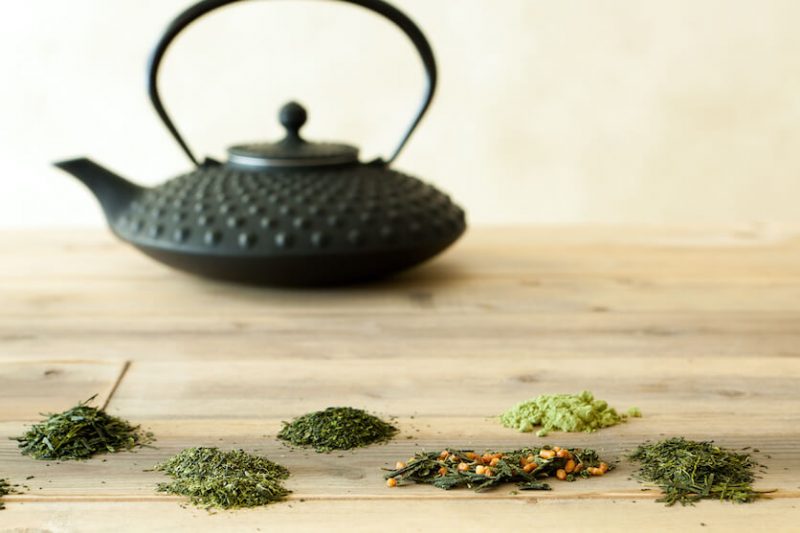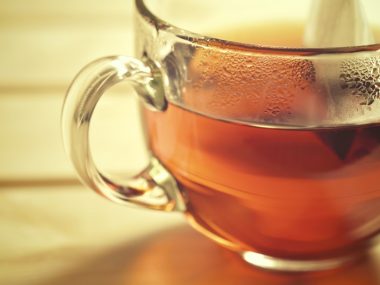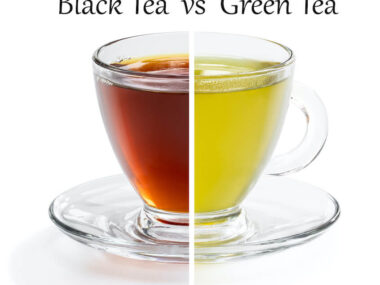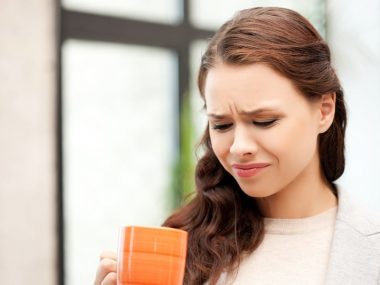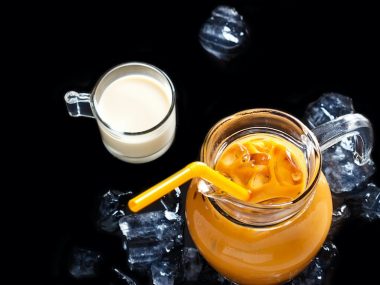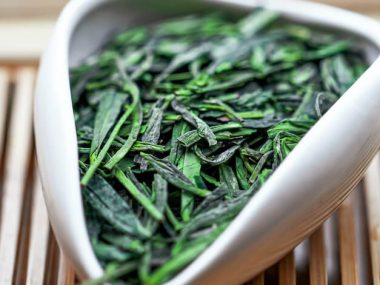No, it’s not green talc powder but a brain food that will put a pep in your step and rev your engines up to full throttle. What is this mysterious thing called Matcha and how does it compare to regular green tea? Let’s investigate!
Table of Contents
What Is Matcha?
Matcha is a frothy Japanese green tea beverage made from a powder. This powder is made from ground-up tea leaves. Matcha tea is prepared with a special bamboo whisk that froths up a mixture of the Matcha powder and water.
Is Matcha and Green Tea The Same Thing?
Green tea is a broad term to classify or categorize a group of true tea. There are five types of true teas which are black, green, oolong, yellow, and white. Because Matcha is made from a powder derived from green tea leaves, it is considered a green tea.
To give you an idea of just how diverse the green tea group is, there are hundreds of different green teas. All come from one plant, Camellia sinensis (the tea plant.) Several factors will depict how the end result tea will taste. That’s the beauty of how mother nature plays a big role in tea flavors.
Region
A tea plant grown in India will produce a completely different tasting tea than one grown in China. As close as China and Japan are, they too can plant the same tea plant and end up with different tasting teas.
Terroir
The climate and soil play a vital role in how a tea will taste from the tea plant in that specific area. For example, a tea plant growing in higher elevations (such as mountains) produces an entirely different tasting tea than one planted at lower elevations.
Special Cultivation Methods
Matcha is a great example of a special cultivation method used to produce a particular flavor or type of green tea. Tea plants grown to be processed for Matcha powder are covered with shaded screens 20 days before harvesting. This causes the tea leaves to produce more chlorophyll because of the lack of sunlight. The tea leaves are not only softer but are a more vibrant green and very sweet.
Harvests (flushes)
Flushes for tea plants being grown for a specific green tea occur at certain times of the year to pick tea leaves for several reasons. The first flush is intended for more expensive green teas that are milder and sweeter. First flushes are also higher in nutrients (health benefits). The last of the flushes (typically the third or fourth) is lower in quality that goes on to be used for teabag tea.
China, Korea, and Japan have their own seasonal flushes, whereas other countries like India have different flushes. As you can see from the below, the first flush typically falls within April for many countries. Some countries at higher elevations may have their flushes timed according to the climate. In contrast, those at lower elevations such as Kenya have no climate issues and can harvest year-round.
China
- 1st flush – early April
- 2nd flush – mid to late April
- 3rd flush – early May
- 4th flush – late May
Japan
- 1st flush – April to May (Matcha falls within this flush)
- 2nd flush – June to July
- 3rd flush – August
- 4th flush – September to October
Korea
- 1st flush – April
- 2nd flush – early May
- 3rd flush – late May
- 4th flush – summer
India
- 1st flush – April
- 2nd flush – June
- 3rd flush – August
- 4th flush – November
Processing Methods
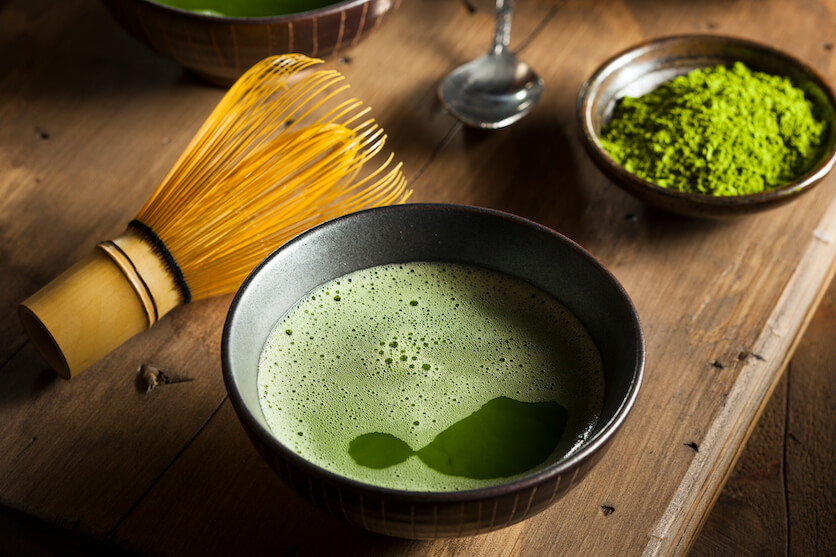
So, we have the flushes that set different green teas apart from one another, and we know that Matcha is from the first Japanese flush. Now we take a look at how the tea leaves are processed once they are harvested and brought to the plant.
Tea leaves intended to make Matcha powder are steamed, cooled, dried, and grounded. The ground bits of tea leaves go on to be placed into special machines that pulverize the bits of tea leaves into a fine powder. This fine powder is then packaged and sent to the tea trading industry, where it’s sold as Matcha tea.
Other green teas undergo specific processing methods to produce a particular finished green tea, such as Sencha, Genmaicha, Gyokuro, Bancha, etc. The methods differ according to the country and the tea.
For example, Japanese tea manufacturers typically steam their green teas. The shorter the steaming time, the stronger and more astringent the taste will be, and the color is much lighter. If steamed for a longer time, the flavor will be smoother, a bit weaker, and the color much darker. Once steaming is done, the tea goes on to rolling, drying, infusing, or post-processing, such as fermentation.
Chinese tea manufacturers, on the other hand, typically pan-fry their green teas. These methods produce lovely smoky, toasty, nutty, tasting green teas. Some of their green teas may also be steamed.
Green tea may undergo one of several processes that include steaming or roasting (pan-fry), rolling, and drying. Post-processing includes grinding into powder (such as Matcha), fermentation, or infusing.
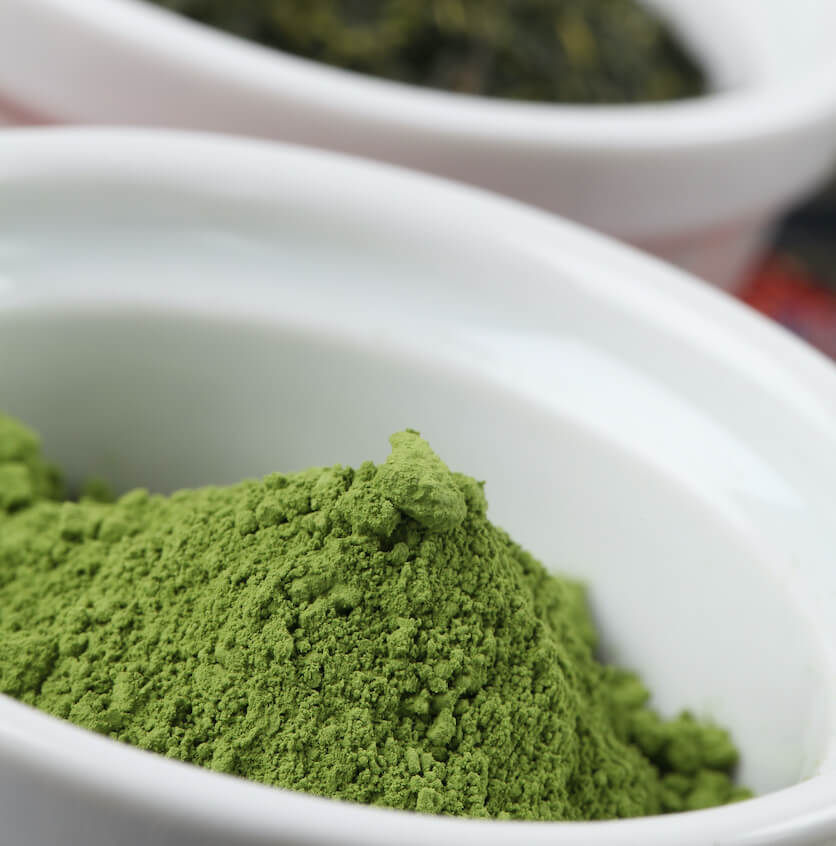
Matcha Green Tea Vs Green Tea: A Comparison
Matcha is considered a green tea, and it can cause confusion trying to compare it against other green teas. What sets them apart is form, processing, taste, and benefits. So, let’s see what those differences are.
A Comparison: The Differences Of Green Tea Vs Matcha
| Matcha Tea | Green Teas |
Cultivation: Shading | Cultivation: Varies |
Processing Method: Less
| Processing Method: More
|
Flavor: Strong | Flavor: Varies |
Color: Darker/vibrant | Color: Varies |
Fermentation: None | Fermentation: Varies |
Caffeine: Higher (18.9 – 44.4 mg) | Caffeine: Lower (11.3 – 24.67 mg) |
Phenols: Higher | Phenols: Lower |
Quercetin (antioxidant:) Higher (1.2 mg) | Quercetin (antioxidant:) Lower (1.1 mg) |
Vitamin C: Higher (32.12 – 44.8 mg) | Vitamin C: Lower (1.63 – 3.98 mg) |
| Amino Acid: Higher | Amino Acid: Lower |
Matcha Green Tea Caffeine vs Green Tea
There is no doubt that Matcha has much more caffeine compared to green tea. According to a published research study entitled “Health Benefits and Chemical Composition of Matcha Green Tea: A Review,” Matcha contains 18.9 to 44.4 mg of caffeine compared to green tea, which has about 11.3 to 24.67 mg.
As far as caffeine in something like Sencha green tea vs. Matcha, Sencha is a great alternative to enjoy green tea and its benefits without as much caffeine.
Matcha Green Tea Caffeine vs. Coffee
The same study notes that Matcha has double the caffeine as coffee (which is only 10.0 to 12.0 mg.) The study further mentions the numerous health benefits Matcha provides and even calls it a “brain food.” So, is Matcha healthier than coffee?
Coffee has its own merits for those who prefer that taste of coffee over an earthy-tasting tea. As for nutritional value, Matcha is perhaps the better of the two.
Is It Good To Drink Matcha Green Tea Every Day?
We are unable to advise whether or not Matcha is safe to consume daily or not. We don’t have the medical expertise to do so. However, we can recommend that talking to your doctor before drinking any tea will ensure it’s safe for you.
Tea may interact with certain medications, cause adverse reactions, or worsen existing medical conditions. Those who are pregnant or nursing should especially consult with their healthcare provider before drinking tea.
Which Is Healthier: Matcha Green Tea Or Green Tea?
It appears that Matcha comes in ahead of green tea when it comes to health benefits (according to the Molecules Journal published by the Multidisciplinary Digital Publishing Institute.)
Green Tea Benefits
Green tea should not be discounted for its numerous health benefits. Not only is green tea a great source of antioxidants, but it has many more valuable benefits. According to a published research article entitled “Chinese Medicine Beneficial Effects of Green Tea: A Literature Review,” green tea fights viruses and infections while decreasing chronic diseases and boosting the immune system.
Matcha Green Tea Benefits
Matcha is perhaps as close to a “bowlful of medicine” as it comes with its robust antioxidative activity. Matcha is higher in Vitamin C, Vitamin E, carotene, and amino acids. Our bodies are more receptive to a powder form of green tea. The Molecules Journal study states that the extraction of phenols within our body is accelerated compared to a green tea in which the tea leaves are steeped. As for Matcha vs. green tea extract, you still reap more benefits in Matcha.
So, when it comes down to health benefits, Matcha green tea vs. green tea, Matcha wins.
What Is The Best Time To Drink Matcha Tea?
Because Matcha is a powerhouse of caffeine, it would be best not to consume it after 3:00 pm. Otherwise, you may have trouble getting to sleep. For those who have study jams going all night, a Matcha might be helpful to push you through. As an alternative to that morning cup of coffee, a cup of Matcha will definitely help to get you going!
How To Enjoy Matcha
Matcha is an acquired taste, and not all are in favor of it. Why not incorporate Matcha into your next batch of chocolate chip cookies? Simply add one teaspoon of your favorite Matcha to your usual chocolate chip cookie recipe. Viola! You have yourself a super healthy batch of luscious cookies.
Choosing One, The Other, Or Both?
Choosing a tea, whether Matcha, green, black, or something else, should be based on your personal palette and what suits you best. Otherwise, a tea cannot be savored and enjoyed, so flavor first, health benefits second!
